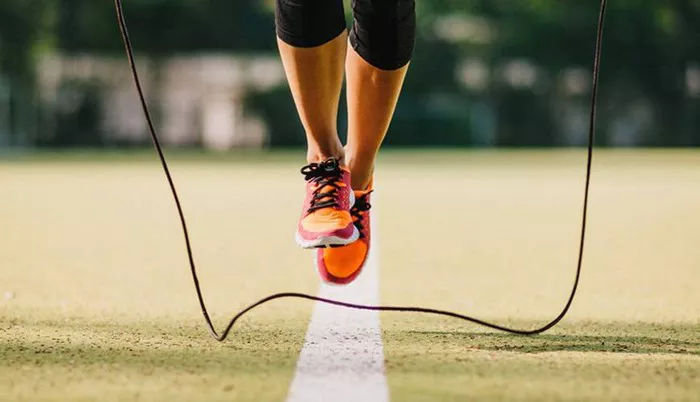Aerobic exercise, often referred to as cardio, is any exercise that strengthens the heart and lungs, increases stamina, and improves overall cardiovascular health. Whether you’re a seasoned athlete or just starting out, improving your aerobic performance can have significant benefits for your health and fitness goals. It can boost energy levels, enhance endurance, and even improve mental clarity. However, many people are unaware that it’s possible to make substantial improvements in aerobic exercise performance within a relatively short time frame, such as just two weeks.
Two weeks may seem like a short amount of time to notice changes in your fitness level, but with the right approach, it is possible to see measurable improvements. The key to success lies in the consistency of your efforts, the type of exercises you choose, and how well you recover. Whether you’re aiming to run faster, cycle longer, or simply enhance your overall aerobic capacity, there are several strategies you can implement that will help optimize your performance.
In this article, we will explore effective methods to improve aerobic exercise performance within two weeks. By focusing on structured training, proper recovery, nutrition, and other complementary techniques, you will be well-equipped to boost your aerobic capacity and achieve noticeable improvements.
Understanding Aerobic Exercise
Before diving into strategies to improve your aerobic exercise performance, it’s important to first understand what aerobic exercise entails. Aerobic exercise is any physical activity that elevates the heart rate and engages large muscle groups for an extended period. Activities like running, swimming, cycling, and even brisk walking all fall into the category of aerobic exercise.
Aerobic training primarily targets the cardiovascular system, improving the efficiency of the heart and lungs. Over time, consistent aerobic exercise can lead to numerous benefits, including improved blood circulation, better oxygen utilization, reduced fatigue, and increased stamina.
The term “aerobic” refers to the presence of oxygen, meaning that these exercises rely on the body’s ability to take in oxygen and deliver it to muscles during physical activity. The more efficiently your body can do this, the better your aerobic performance.
Key Strategies for Improving Aerobic Exercise
Improving your aerobic performance in two weeks requires a strategic approach. Here are the most effective strategies you can incorporate into your fitness routine to enhance your aerobic capacity.
1. Consistent Aerobic Training
Consistency is crucial when it comes to improving any aspect of fitness, and aerobic exercise is no exception. To see noticeable improvements within two weeks, it’s essential to engage in regular aerobic sessions. Aim for at least 4-5 days of aerobic exercise each week, with each session lasting between 30-60 minutes.
The type of aerobic exercise you choose will depend on your goals, but the key is to push yourself beyond your usual comfort zone. Gradually increasing the intensity and duration of your aerobic workouts will stimulate the cardiovascular system, leading to improvements in endurance and capacity.
How to Progress Your Workouts
To progressively improve, you can gradually increase the intensity, duration, or frequency of your aerobic sessions. For instance, if you’re a runner, you can add more distance or gradually increase your speed over time. If cycling is your focus, aim to cycle for longer periods or at a higher intensity. This gradual progression will challenge your body to adapt and grow stronger.
Another method to progress is interval training, which involves alternating between high-intensity bursts and lower-intensity recovery periods. This type of training boosts cardiovascular fitness, increases stamina, and helps improve aerobic performance more rapidly.
2. Incorporate Interval Training
One of the most effective ways to improve aerobic fitness in a short amount of time is by incorporating interval training into your workouts. Interval training consists of alternating periods of intense exercise with rest or lower-intensity exercise. For example, if you’re running, you could sprint for 30 seconds, followed by 90 seconds of walking or jogging to recover.
Interval training has been shown to improve both aerobic and anaerobic fitness, making it an excellent way to boost endurance and overall performance. High-intensity interval training (HIIT), in particular, is known for its effectiveness in improving cardiovascular health, burning fat, and increasing stamina.
A simple HIIT workout could consist of:
- 30 seconds of sprinting
- 90 seconds of walking or light jogging
- Repeat this cycle for 20-30 minutes
As you progress, you can adjust the intensity or the duration of each interval.
3. Focus on Long, Steady-State Sessions
While interval training is excellent for improving aerobic performance quickly, steady-state aerobic exercise (exercising at a constant, moderate intensity) is also important for building endurance. Steady-state training helps your body become more efficient at utilizing oxygen over longer periods, which is essential for sustained aerobic performance.
To improve your aerobic fitness within two weeks, aim to include at least one or two long steady-state sessions in your training routine. These sessions should last between 45 minutes to 1 hour and be performed at a moderate intensity where you can maintain a conversation but still feel challenged.
The long, steady-state workouts help your body adapt to sustained effort and increase your endurance threshold.
4. Improve Your Breathing Technique
Proper breathing is key to improving your aerobic performance. Poor breathing techniques can lead to fatigue and diminished exercise capacity. To enhance your aerobic exercise, focus on deep diaphragmatic breathing, which allows your body to take in more oxygen, improving stamina and reducing the risk of fatigue.
When exercising, practice inhaling deeply through your nose, expanding your diaphragm rather than shallow breathing from your chest. Exhale fully through your mouth to expel carbon dioxide efficiently. This technique will allow for better oxygen flow to the muscles and can help delay fatigue.
Breathing is especially important during intense interval training. By maintaining controlled breathing throughout high-intensity intervals, you will enhance your performance and reduce the likelihood of feeling out of breath.
5. Active Recovery
Active recovery is just as important as the workouts themselves. Recovery periods allow your body to repair, rebuild, and adapt to the training stimulus. Without proper recovery, you risk overtraining, injury, or burnout. To improve your aerobic performance, incorporate active recovery days into your training routine.
Active recovery involves low-intensity exercises like walking, light cycling, or yoga. These activities keep your body moving without putting excessive strain on it. Active recovery helps to clear metabolic waste products, reduce muscle soreness, and prepare your body for more intense training sessions.
Additionally, make sure to get adequate rest and sleep. Sleep is critical for muscle recovery and overall health, and poor sleep can hinder your ability to improve your aerobic fitness.
6. Proper Nutrition and Hydration
Nutrition plays an important role in supporting aerobic exercise performance. A well-balanced diet can help optimize energy levels, muscle recovery, and endurance. To improve your aerobic performance in two weeks, make sure you are fueling your body properly with the right nutrients.
Carbohydrates are your body’s primary source of energy for aerobic exercise, so ensure that you consume enough carbs, especially before long or intense workouts. Foods like whole grains, fruits, and vegetables provide complex carbohydrates that sustain energy levels.
Protein is also essential for muscle repair and recovery, especially after strenuous exercise. Include lean sources of protein, such as chicken, fish, beans, and nuts, in your diet to support recovery and muscle growth.
In addition to proper nutrition, staying hydrated is crucial for maintaining performance. Dehydration can lead to fatigue, cramping, and poor endurance. Drink water regularly throughout the day and consider hydrating with an electrolyte drink during intense workouts.
7. Monitor Your Progress
Tracking your progress is an essential part of improving aerobic performance. By recording your workouts, intensity, and any changes in your endurance, you can assess what’s working and make adjustments as needed. Tracking will also help you stay motivated and committed to your goals.
Consider using fitness apps or wearable devices to track your heart rate, distance, speed, and other performance metrics. This data can give you insights into your progress and help guide your training decisions.
Conclusion
Improving aerobic exercise performance within two weeks is entirely achievable with the right approach. By incorporating consistent training, focusing on interval and steady-state workouts, improving breathing techniques, and ensuring proper recovery and nutrition, you can make significant strides in your aerobic capacity. Remember that improvement comes from both effort and consistency, so stay committed, track your progress, and listen to your body as you work towards your goals. In just two weeks, you will likely notice increased endurance, improved stamina, and better overall cardiovascular health.
Related Topics































